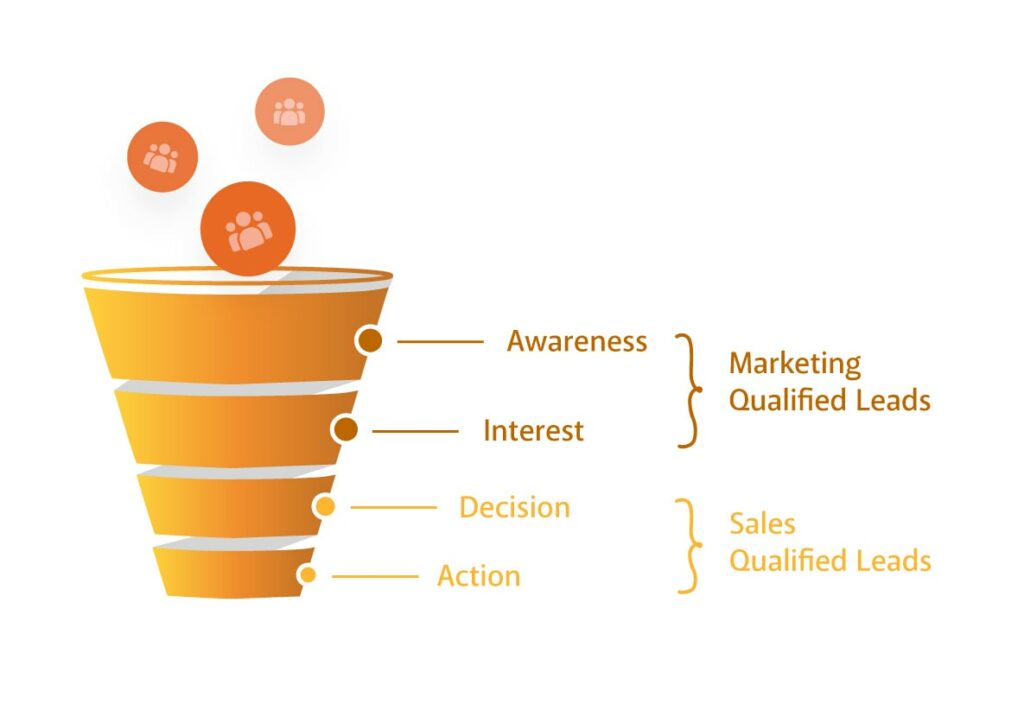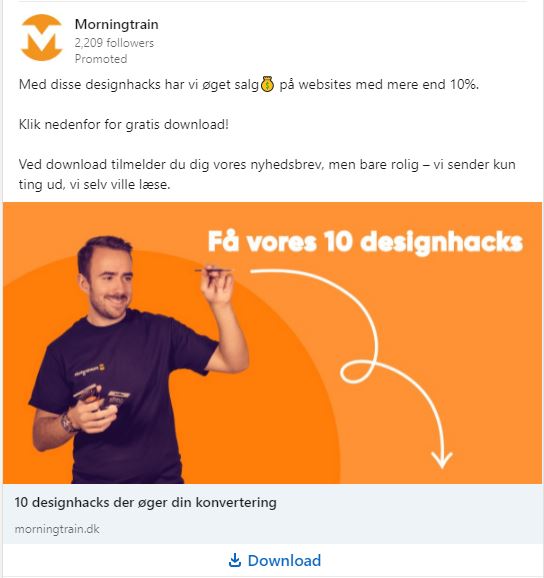Paid Social
21. januar 2021
Hvad betyder SoMe?

SoMe er en sammentrækning af ’Social Media’, men det bruges ofte som en forkortelse for marketing på de sociale medier.
Et socialt medie er en platform, hvor brugerne selv skaber indholdet og kan interagere med hinanden. Deraf kommer ordet ’social’ i Social Media.
Eksempler på sociale medier er:
Alle platforme tilbyder deres brugere noget unikt, uanset om det er måden, de interagerer med hinanden, eller hvilken type indhold de kan lægge op.
Fælles for alle sociale medier er, at brugerne dokumenterer dele af deres liv herpå. De oplyser dermed platformen om nogle private informationer, som giver platformen adgang til at forstå dens brugere på en helt unik måde.
Det er ovenstående adgang til brugerdata, som har gjort ’SoMe’ marketing så populært. Det giver dig nemlig mulighed for at annoncere på platforme, hvor brugerne selv har givet dig alle informationer om dem, som du kan bruge til målrettet markedsføring. Eksempler på brugbare informationer for din markedsføring kan være, om personen har børn eller ej, civilstand, beskæftigelse, interesser og lignende.
Men hvilke sociale medier skal du så fokusere på? Den kløgtige marketingsmedarbejder udvælger få SoMe kanaler og fokuserer på at lykkes på disse frem for at gå halvhjertet til værks på mange. Disse kanaler udvælges efter formålet for markedsføringen, samt hvilken målgruppe man gerne vil nå.
Bemærk: Ovenstående resultater er et gennemsnit, som vi fandt ved at analysere på tværs af kunder, markeder og brancher. Alle cases er forskellige, og det vil tallene også være.
Det betyder SoMe for din forretning
Alt efter hvad din virksomhed laver, bør SoMe i højere eller lavere grad spille en rolle i dit marketingmix. I B2B sammenhænge bør du overveje at inkludere SoMe til dine brandingindsatser samt employer branding – altså til at brande jer overfor potentiel arbejdskraft. Derudover kan B2B virksomheder også få meget ud af at annoncere på især LinkedIn.
I B2C sammenhænge handler SoMe i højere grad om at være på de platforme, som dine kunder er på. Her skal du altså have en relativt god forståelse af, hvem målgruppen er, så du sørger for, at I befinder jer på de platforme, jeres målgruppe er på.
Uanset om du er B2B eller B2C, så handler SoMe marketing om at nå målgruppen, på de kanaler hvor målgruppen befinder sig.
Hvis du har et produkt, som ikke er velkendt, eller hvis du løser en kendt udfordring på en helt ny måde, så handler det netop om at “skubbe” dit budskab direkte ud til din målgruppe – du kan ikke afvente, af de søger efter dig via søgemaskinerne.
Sociale medier kan effektivt benyttes til fire ting:
- Øge brand awareness – altså du kan få dit brandnavn på fleres læber.
- Generere leads – de mest gængse sociale medier tilbyder gode muligheder til at generere leads.
- Employer branding – sociale medier er et stærkt værktøj til at tiltrække arbejdskraft.
- Skabe salg – især Facebook og Instagram kan skabe salg til din webshop vha. f.eks. dynamiske produktannoncer.
SoMe som lead-kanal
Om sociale medier kan bruges til at generere leads eller ej afhænger af, hvad du kan tilbyde din målgruppe.
For at få et lead – altså få adgang til nogle oplysninger, der gør det muligt for dig at kontakte folk eller alternativt giver dig adgang til at målrette dem med din markedsføring efterfølgende – bør du tilbyde din målgruppe noget gratis værdi, som de kan få adgang til som ”bytte” for deres kontaktoplysninger”.
SoMe kanaler kan genere både Marketing Qualified Leads (MQL) og Sales Qualified Leads (SQL), det afgørende er at målgruppen og budskabet matcher.

Hyppige strategier til at skaffe henholdsvist MQL’er og SQL’er:
MQL:
- Tilmelding til nyhedsbrev
- Download af whitepapers
- Download af ebog
- Deltagelse i webinar
- Personen har set x% af noget video content
SQL:
- Telefonopkald
- Kontaktformular udfyldelser
- Emails til salg
- Demo booking
- Gratis analyse, eller vurdering bestilt

Eksempel på en af vores Facebook annoncer
SoMes betydning i fremtiden
Kigger jeg i krystalkuglen så spår jeg at SoMe forsat vokser. What? Big surprise 😉
Bemærk dog at jeg ikke snakker om, at eksisterende medier vokser. Sociale medier kom til Danmark i 00’erne, og allerede på de små 20 år der er gået siden, er der skudt mange nye op, og målgrupperne på de forskellige medier har ændret sig flere gange.
Da Facebook udkom, var det for unge studerende – nu er majoriteten af aktive brugere Generation X. Instagram var der, hvor alle de unge flygtede hen, da alle forældrene kom på Facebook. Nu bruges Instagram hovedsageligt af Millennials – og trods at vi ofte går og tror, at Millennials er unge, så er det folk i alderen 25-40 år 😊
Så for at gøre en lang smøre kort, så spår jeg:
- Brugersegmentet på hver kanal vil konstant ændre sig
- Der kommer flere medier til
- Nogle medier dør – kan nogen huske DKBN, Arto, MySpace, Friendster? Nå, ikke det? At et medie er stort i dag, betyder ikke at det er stort ”i morgen”.
Den kløgtige marketingsmedarbejder udvælger få SoMe kanaler, og fokusere på at lykkedes på disse, frem for at gå halvhjertet til værks på mange. Disse kanaler udvælges efter formålet for markedsføringen, samt hvilken målgruppe man gerne vil nå.
Tøv ikke med at kontakte os, hvis du har brug for et Paid Social Bureau.





